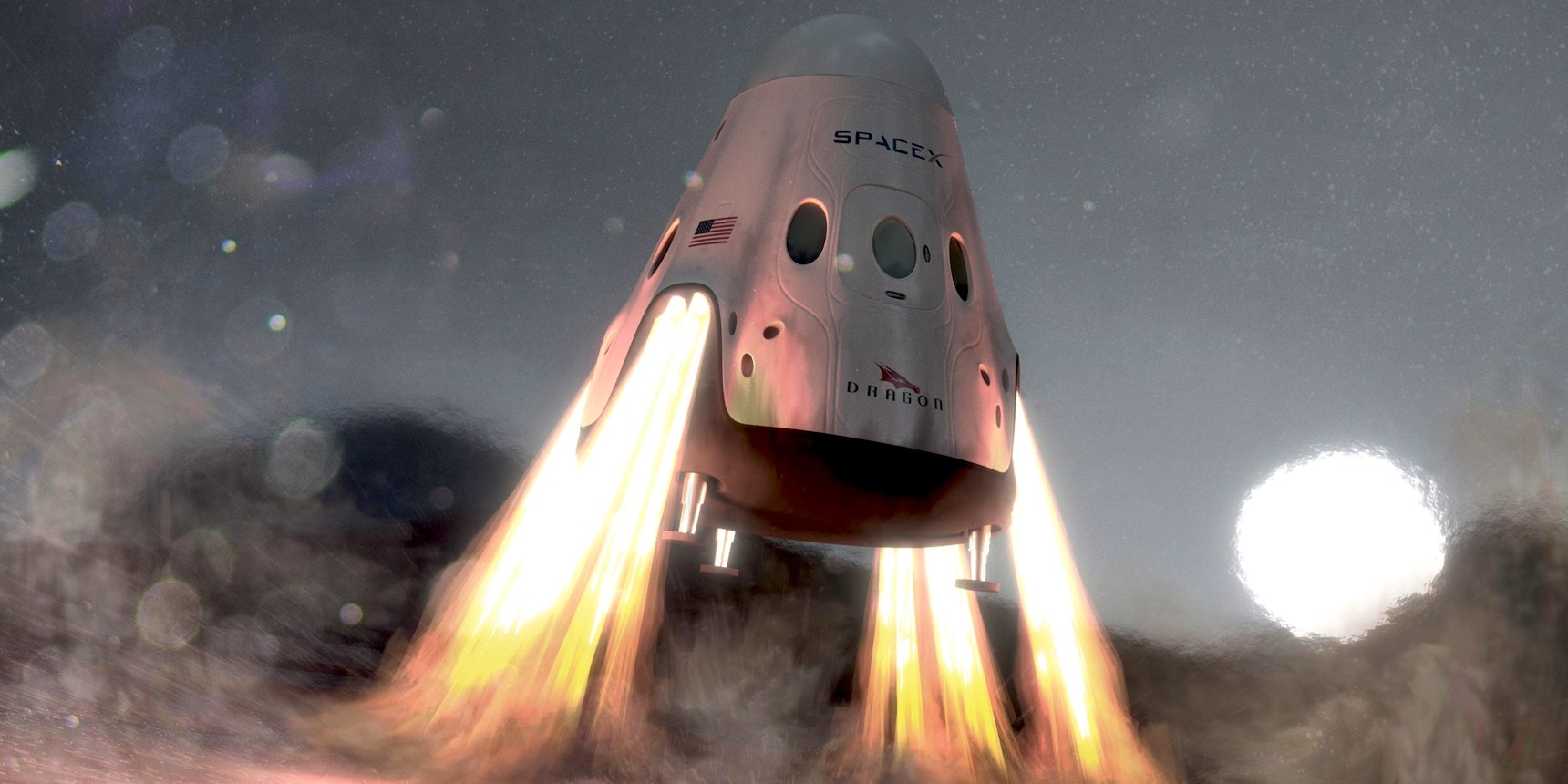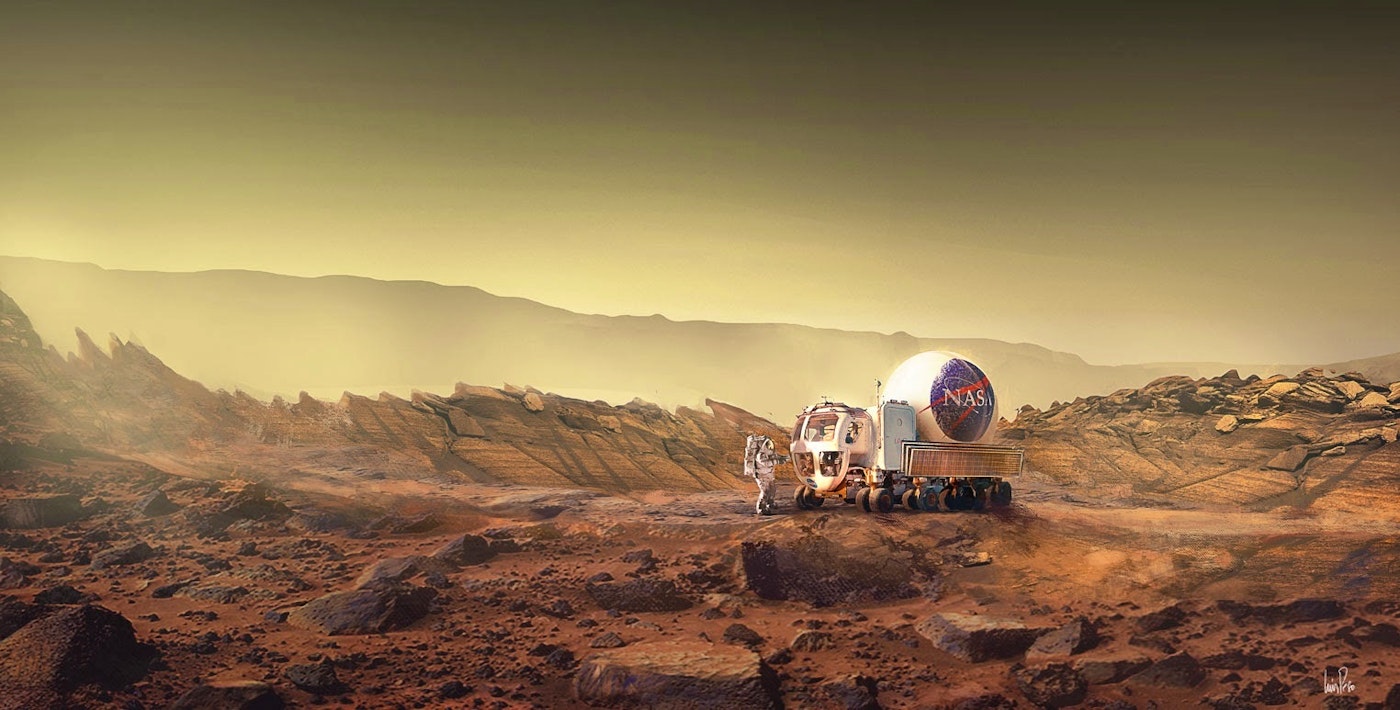
What Happens if SpaceX Beats NASA to Mars?
What Happens if SpaceX Beats NASA to Mars?
- Neel V. Patel
- September 15, 2016
- Mars
At a panel discussion Thursday about the “Journey to Mars” at the American Institute of Aeronautics and Astronautics’s annual Explore SPACE Forum, one question stood out among the rest.
What happens if SpaceX send humans to Mars before NASA?
After all, SpaceX CEO Elon Musk has been exceptionally clear about his goal to send a crewed spacecraft to the red planet by the year 2025. (It’s unclear if this vehicle would land on the surface or not, but judging by the company’s express plans to design its Red Dragon capsule as a landing craft, it’s difficult to imagine the company would avoid trying a landing attempt. In any case, a 2025 crewed mission would be way ahead of what NASA has planned.)
There are a ton of things SpaceX has to troubleshoot before a crewed mission to Mars is even close to possible — the company hasn’t even sent humans into orbityet! Still, it’s not unthinkable.
Faced with such a prospect, William Gerstenmaier, NASA’s associate administrator for human exploration and operations, had a very astute response: “It’s not a competition.”
He went on to explain that whichever company or agency first able to make it to red planet is irrelevant to the bigger picture of expanding the presence of humanity into deep space. “It advances us as a species,” he said. NASA is rooting for SpaceX and the success of the Red Dragon program as much as Musk and his team are rooting for NASA.

Artist Luis Peso's depiction of Mars based on Andy Weir's book 'The Martian'.
And for good reason. NASA and SpaceX are each equipped with their own set of advantages and disadvantages. The $20 billion-ish federal agency is a powerhouse of scientific and technological expertise. In its partnership with SpaceX, NASA is able to provide the know-how for how to conduct a launch and a successful, safe spaceflight. The agency can facilitate deep space communications using existing infrastructure so that SpaceX crews can still talk to ground control.
Unfortunately, NASA is hampered by the fact that it can’t move as fast as a private company. “If we tried to do this mission and tried to pull this together,” said Gerstenmaier, “we’d have to certify everything” and ensure 100 percent success.
But “spaceX,” he said, “can take these risks.”
What does NASA get in return? Because SpaceX can conduct missions much faster and more frequently than NASA, they can provide the agency with essential data regarding rocket launches, descending into the Martian atmosphere, and landing on the surface of the red planet.
And that could be a treasure trove of data. “Our plan is that at every opportunity, we would like to send a Red Dragon to Mars,” said Abhishek Tripathi, the director of the certification program at SpaceX. Partnering with NASA, he explained, is a mutual benefit all around.
At the panel, Gersentmaier was also able to provide insight as to why NASA is seemingly ignoring a resurrection of a lunar program — even though the moon isthought to be key to helping send astronauts to Mars.
Gerstenmaier explained that building a lunar lander and sending it to the moon’s surface would not provide any essential data on how to descend and land a spacecraft on Mars, because the moon has no atmosphere whatsoever. “It doesn’t have much play forward,” he explained.
SpaceX, having expressed no plans to send any spacecraft to the moon either, seems to feel the same way.
Photos via Luis Peso, SpaceX / YouTube
No comments:
Post a Comment